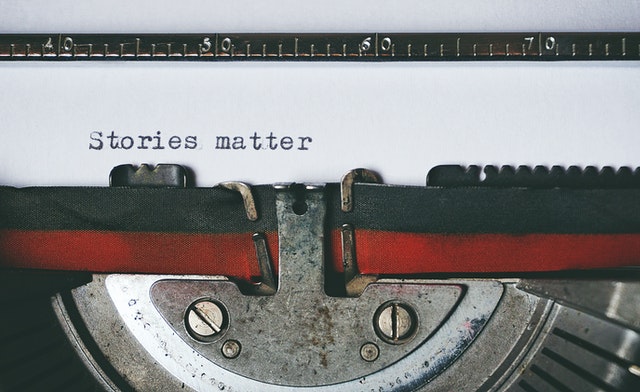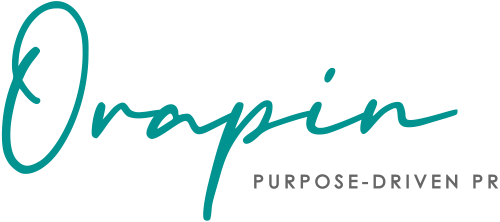
When people think of the term “PR,” many think “press release.” While press releases are certainly a component of PR, PR actually stands for “public relations,” not press release. As such, we, as your PR pros, kindly request that you refrain from calling press releases “PRs.” Now that we have that out of the way, let’s talk about what a press release is really for and how (and how not) to use one as part of your public relations strategy.
As a marketing/comms pro for a purpose-driven organization, you likely know what a press release is and that you should use a press release to share news. But, do you know all the nuances of a press release? What makes a press release great? What makes a press release REALLY bad? Do you use a press release as a format to share all your news? A press release is not a strategy and creating one is not as simple as just writing up the latest happening at your organization. Let’s get into the nitty-gritty and break it down.
What is a press release and how should I use it?
Wikipedia defines a press release as “an official statement delivered to members of the news media for the purpose of providing information, creating an official statement, or making an announcement directed for public release.”
We find this definition to be a bit misleading. While true, it evades the nuance of modern public relations strategy and the golden rule of press releases: ONLY create a press release when you have REAL news to share. What is real news? Real news is something that is of interest to a broader audience than your primary stakeholders, employees, and clients. So that office remodel? Exciting for your primary stakeholders, not newsworthy to the general public. Expanding your services, opening a new location, or commencing a new community partnership? All of these types of news are of interest to the broader community and can and should be announced in a press release.
Before you create a press release, you must always ask yourself: is this story something that people beyond our inner circle will care about? Remember, reporters are inundated with pitches and press releases all day every day. Is your story one that deserves to be covered? Is it real news that belongs in the press or should this “news” be shared in a blog or social media post for your existing audiences?
In short, save the press release to share your biggest, most earth-shattering announcements. Do not issue press releases just to “make noise” or stay “top-of-mind.” Along with the “boy who cried wolf,” the organization that issues too many press releases on non-newsworthy topics quickly becomes irrelevant and ignored.
What should I include in my press release?
“On average, five times as many people read the headline as read the body copy. When you have written your headline, you have spent eighty cents out of your dollar.” – David Ogilvy
There are a few key elements of a great press release. The key takeaway is that you have to make it interesting! Remember, people have a short attention span and a desire to be entertained. Distribute a boring release and chances are no one will take much notice. Punch it up and make it interesting? Now you have their attention!
Here are a few tips for making your press release stand out.
- Make the headline catchy! As David Ogilvy shared if you don’t catch their attention in the headline, the vast majority of readers will glaze over and click next. Use your creative juices to make the headline stand out so that people feel like they HAVE to keep reading to hear all the details.
- Make the body of the release easy to digest for all audiences. Avoid jargon, complicated phrasing, and references to obscure technical situations. Remember, a press release is meant to be accessible to all audiences. Even if your press release is in reference to a highly technical piece of medical equipment or the release of original research on the opioid crisis, it should be written in a way that makes the information equally accessible to the producers at the Today Show as it is to the medical editor for your industry trade publications. The people who want more jargon and detail will come to you to get it. Those that want to share the information with a general audience will appreciate that the information is provided in an approachable manner.
- Use quotes to help tell the story. Far too often we see quotes that say something along the lines of “We are thrilled to launch this new program, it has been many years in the making.” Nope, don’t do that! The quote should help tell the story, provide additional detail, or outline the impact of the news. Quotes that say “we are thrilled and beyond excited by this news” are a waste of space and won’t get included in any editorial content. Instead, share something meaningful such as “We found that only X% of ABC group had access to DEF services in our community. This new program will have XYZ impact on the community by improving access to XYZ services for those who need it most.”
- Keep it brief. Tell your story with brevity! No one wants to wade through a four-page press release. Share a small amount of identifying information or background, the main news, a couple of supporting points to identify the impact or importance, and a closing statement with information on how/where reporters can learn more. One to two pages is plenty!
Press release myths debunked
Press releases do not always result in media coverage. Remember, just because you put it in a press release does not mean it is newsworthy! Often a reporter will need more context to understand why a press release deserves coverage.
More important than your press release is your pitch. Pitches, directed to select and targeted reporters, are what actually yield the feature stories. The press release is a nice supporting tool, it’s a piece of content that provides all the information. The pitch is what shapes the story.
Sure some outlets will cut, paste, and publish a press release as-is on their website. But the valuable coverage that includes the additional detail, storytelling, and in-depth interviews comes from a good pitch where you have explained why the reporter should take note of your news.
Generally speaking, press releases are a powerful and important tool in your PR toolbox. Just make sure the news is worth sharing and you are presenting it in an interesting way. Sure, there are many formal formatting guidelines for creating a press release, but keep in mind that the reader of your release is a real person who wants to understand your story, get all the facts straight, and understand why your news matters. Above all else, make sure the press release shares your news in a way that captures the attention and imagination of your media audience.
Photo by Suzy Hazelwood

Diana Crawford is a seasoned public relations consultant with more than 15 years of agency, consulting, and in-house experience. She joined Orapin in 2013 and manages account services and client communications strategy development. She has worked across a variety of industries and has expertise with professional services, food/alcohol, health and wellness, lifestyle, sports, education, tech, and non-profit organizations.
